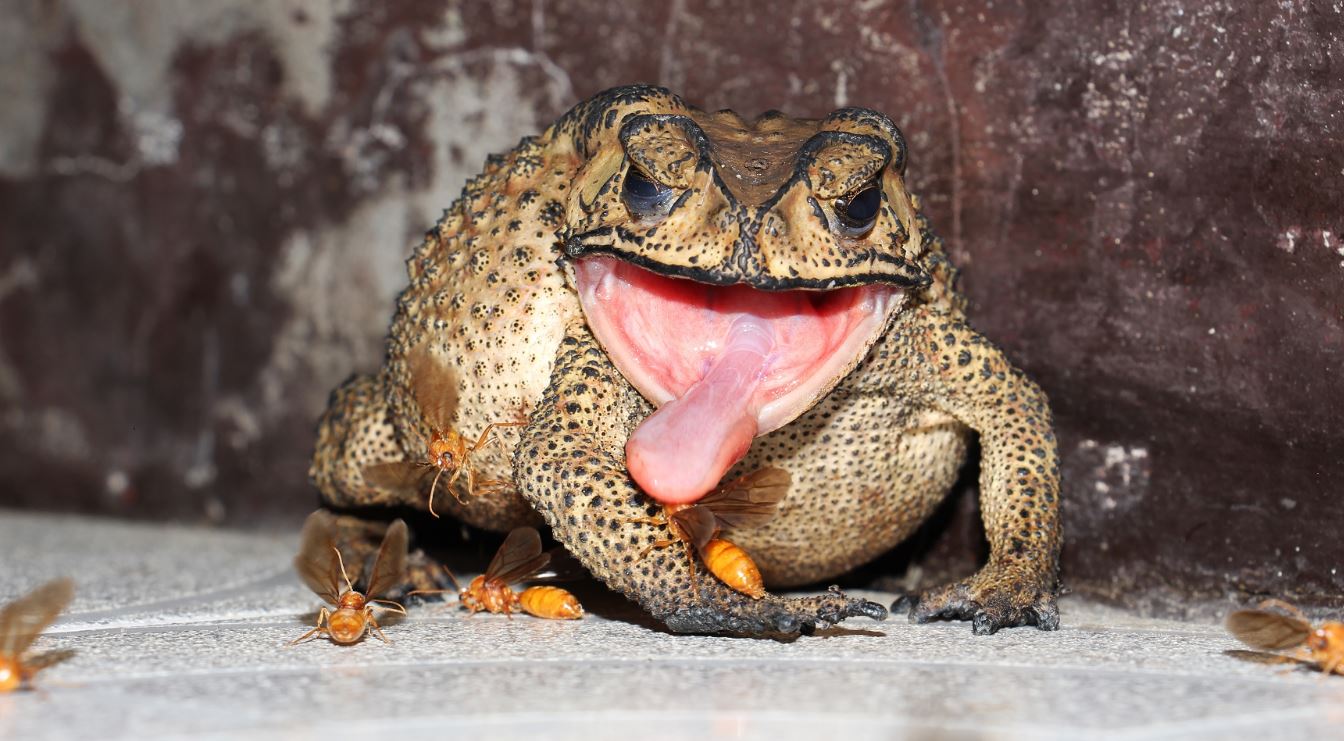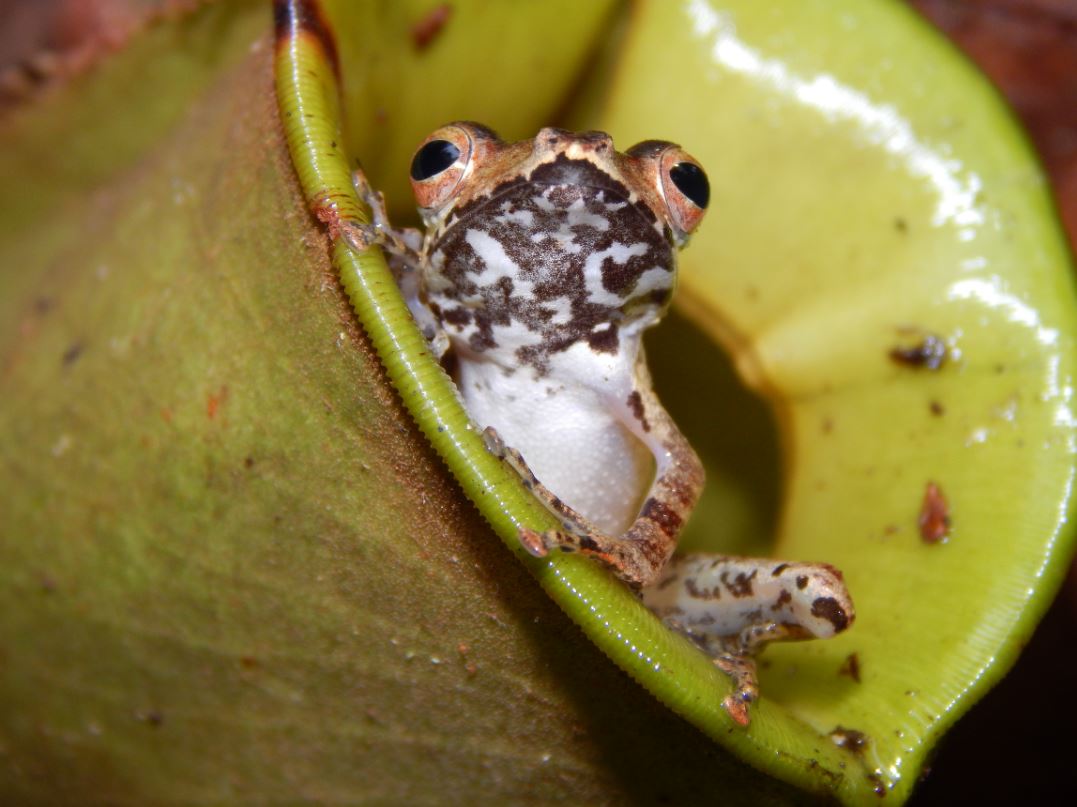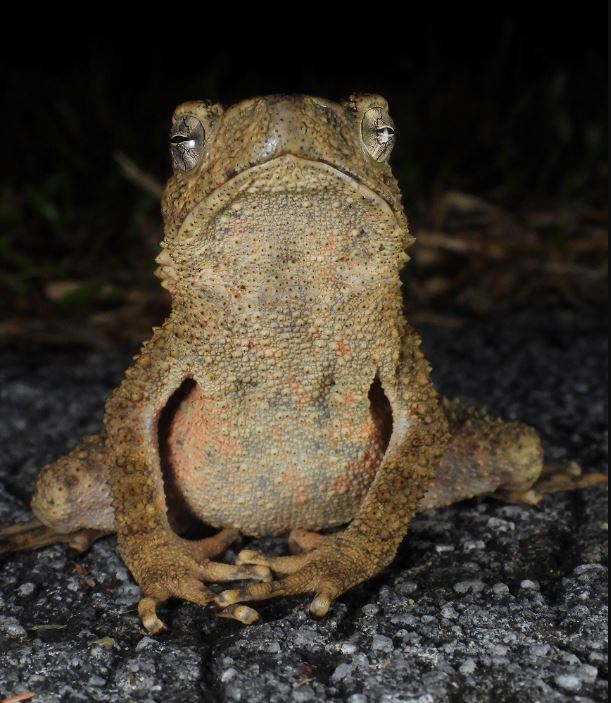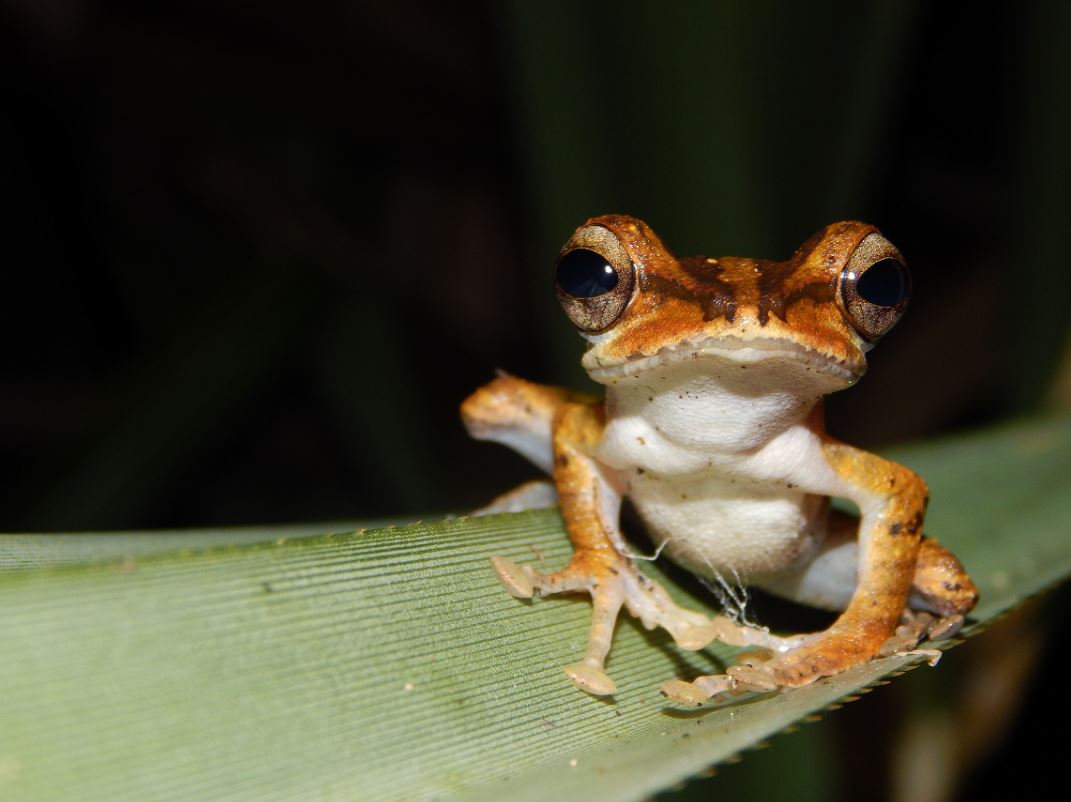July 22, 2023
From garden ponds to classroom tanks and from science labs to fairytales, frogs and toads seem to have been with us ever since we were tadpoles ourselves. But can you tell the difference between them? What do they have in common and what sets them apart? This article explores their murky world in search of answers. Let’s hop right into it.
First of all, something they have in common: their name. Both frogs and toads are a type of amphibian – a Greek word meaning ‘dual-life’ or ‘two modes of living’. Amphibians first climbed onto dry land around 368 million years ago, but never lost their connection to home – their relationship with water continues to determine where they live, how they live, and what they look like.

Despite their family ties and the many similarities they share, a few characteristics can help you tell frog and toad apart. Here are six ways you can spot the difference:
1. Physical appearance
One of the easiest ways to tell the difference between frog and toad is the way they look. The texture and patterning on their skin is a dead giveaway – toads tend to be warty, spotty and dry-looking, whereas frogs have a wet look and are usually (but not always) sleeker and smoother. This also relates to their behavior, as frogs spend most of their time in or around water, while toads tend to roam around and burrow on dry land.
But before we go jumping to any conclusions, it’s important to remember one thing: in the weird and wonderful world of amphibians, there are exceptions to every rule. Litter frogs, for example, have short legs and live mostly on dry land; some toads have smooth skin, while a few frogs have a rough, nodular appearance. It’s this diversity that makes frogs and toads so endlessly fascinating – warts and all.

2. Habitat
Another clue to the frog vs toad question is where you see them. Frogs’ skin loses moisture much more easily than their toad cousins, so they like to stay close to water. If you see one of these amphibians hopping through the grass, along a path, or somewhere away from the wet, it’s probably a toad. Their skin is more waterproof, so they can handle being drier for longer.
3. Eggs
Another key difference between frogs and toads is in their eggs – also known as spawn. Frog spawn is laid out in clumps and looks like a pile of translucent bubbles with small, black dots (yolk) in the middle; by comparison, toad spawn is stringy, with black dots laid out in a long, thin ribbon of jelly (albumen).
4. Tadpoles
After the eggs hatch, both frogs and toads embark on their second life stage as tadpoles – little wriggling blobs with a mouth at one end and a tail at the other. These little critters are made for two things: swimming and eating. For the first few weeks after they hatch, they gobble up algae and plant matter in ponds, then slowly switch to eating meat and small insects (they even eat other tadpoles). Like the adults, frog tadpoles are generally slimmer, while toads are more squat and chunky-looking. Both frog and toad live this way for around 1-3 months, until they grow their arms and legs and begin to look like mini adults (froglets and toadlets).

5. Movement
If you’re still not sure about the difference between frogs and toads, take a look at their legs and how they move – frogs’ legs are usually longer than the rest of their body and are made for leaping, whereas toad legs are shorter and designed for trundling around in the undergrowth. If it crawls, it’s likely to be a toad; but if it hops, it’s probably a frog.
Think you’ve cracked the difference between frogs and toads? Think again. Did we mention amphibians love to break the rules? Some sticky frogs or burrowing frogs have short legs and move by walking rather than jumping. These guys can also inflate themselves and float in water – you’ll find them bobbing around in puddles after a rainstorm. In the forests of Sumatra, you can also find a species called the slender-legged toad – as the name suggests, this is one toad that’s happy to hop.
6. Which one is poisonous?
Have you ever heard of poison dart frogs? As the name suggests, these little guys pack quite a punch. Their poison is so deadly that indigenous tribes in the Amazon jungle tip their blow darts and arrows with it, so they can instantly kill their prey on hunting trips. Over many millions of years, various frog and toad species have developed powerful toxins to protect themselves from predators. Usually secreted through the skin, these chemicals can also be deadly to humans.

But what’s the point in being poisonous if your predator has to eat you to find out about it? To solve this problem, most poison dart frogs advertise their toxicity with bright colors and markings on their skin, so bigger animals know not to make a meal out of them. But what about toads? They’re not colorful, so does that mean they’re not poisonous? A common misconception is that touching a toad will give you warts. This is a myth. But the truth is actually even more extreme…
Surprisingly, all toads are poisonous to some extent – licking, ingesting or even touching one can cause symptoms like nausea, vomiting and stomachache, so be sure to wash your hands after handling one (also, kissing a toad won’t turn it into a prince – but you will probably get to meet a doctor or two shortly afterwards). When it comes to frogs and toads, fact is often weirder than fiction.
RER efforts on biodiversity
The RER concession area is one of Indonesia’s most important peatland swamp areas. Spread out over more than 150,000 hectares of swamps, forests and wetlands, this region is the perfect habitat for a diversity of frog and toad species. Sure enough, RER is home to at least 21 varieties of these critters, which come in all shapes and sizes. Frog species include cinnamon frogs, grass frogs, Collet’s tree frogs and crab-eating frogs, while toad species spotted in RER include the Sunda toad, crested toads and river toads, among others.
A big part of conservation efforts in RER involves re-wetting areas that had previously been drained for deforestation and agriculture. So far, 87 dams have been constructed and 31 drainage canals rebuilt, covering a total length of around 177 km. This has resulted in 11,000 hectares of land on the Kampar Peninsula and Padang Island being re-wetted. For the many amphibians that call RER their home, wetter is better.
As members of one of our planet’s oldest animal families, frogs and toads provide a connection to the past and a link between land and water. With one foot in each of these worlds, they give us a clear indication of how well an ecosystem is functioning. Their success in RER is a sure sign that nature is doing well and conservation is on the right track. To find out more about their habitat and the work being done to keep it healthy, explore our website.